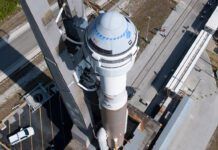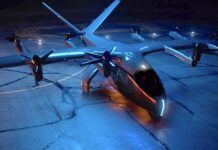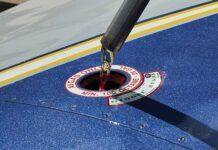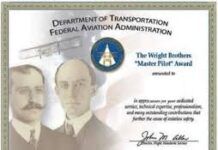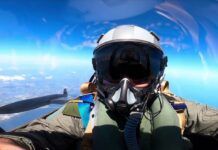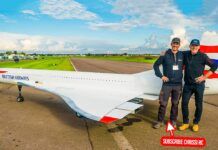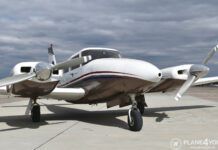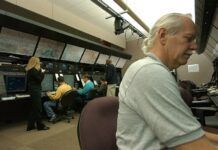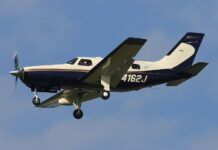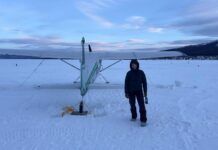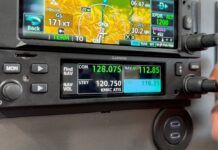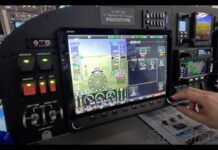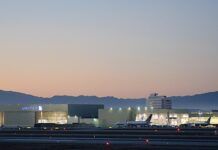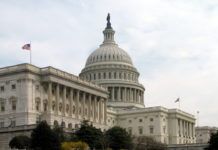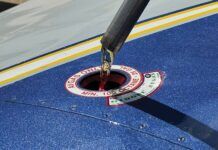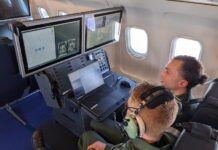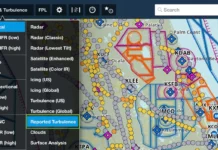
I don’t know how many times the subject of the conversations in the Pilot’s Lounge here at the virtual airport have lingered on issues of aircraft maintenance. If there is one thing that concerns a pilot nearly as much as flying weather or the cost of flying, it is the mechanical condition of the aircraft he or she flies. The stories of difficult-to-diagnose maladies afflicting our airborne chariots abound, and smart owners not only join the user organization for their type of airplane but also move heaven and earth to find a mechanic who has expertise in the type and then work to keep him or her happy. We hear of the mechanic at the next airport over who can work miracles with Ercoupes and Aero Commanders or the one at the airport 40 miles down the road who couldn’t find the engine of a Cessna 172 with both hands, a magnet and a flashlight.Some of the harshest stories I hear become lawsuits after a pilot who went half way across the country to buy a used airplane that supposedly had a “fresh overhaul” or “fresh annual” returns home and finds that after about five hours of flying no one can stand near the airplane for fear of it falling on them (see last month’s column). It then turns out that the mechanic who signed the logbook lied violently when he or she scrawled out a signature. The owner is facing a monstrous bill to make the airplane airworthy, if it is possible, and is wondering how in the world he could have protected himself by finding a reputable mechanic in the area to do a prebuy when he didn’t know a soul in the area.
Relying On Mechanics
The reality is that few pilots are qualified as aircraft mechanics. Therefore, most of us are at the mercy of those who have the FAA certification to repair and return an aircraft to service. We, as pilots, do our best to comply with FARs regarding how we operate airplanes, so we rightfully rely on mechanics to follow those same FARs, because the FARs — combined with the manufacturer’s service instructions (which the mechanic is required by FARs to follow) — set out just exactly what is to be performed on an annual inspection or during repairs, so that the aircraft may be considered airworthy. Unfortunately, there are some mechanics, just as there are some pilots, who simply don’t give a damn about the FARs or the manufacturer’s service instructions and will sign off an aircraft when it is not even close to being airworthy. No, I don’t know why, but welcome to aviation. The FAA does not have the budget to look over the shoulders of pilots and mechanics to assure they follow the FARs, nor would any of us like it if the industry were so tightly regulated.On top of everything else, aviation mechanics make about half to two-thirds of the income of an automobile mechanic … someone who has not had to undergo formal training and does not put his or her career on the line with each signature in an aircraft or engine logbook. The better-paid aviation mechanics tend to be working either for airlines or for corporate operators; those who work in the G.A. world have to constantly listen to pilots who are always insisting, “It’s not that bad, let’s just defer it,” and a number of pilots firmly believe mechanics exist to try to gouge them. It’s no wonder the surveys of aviation mechanics show that only a tiny proportion would recommend that their children enter the profession.A fact that does not help our industry is that — while pilots, flight engineers, flight attendants and dispatchers have recurrent training requirements — none exist for mechanics. If we have just bought ourselves a brand new, composite-structure, glass cockpit, Machbuster 2001 and the frammis goes out, taking the muffler bearings with it, when we are in the middle of the runup at an average general aviation airport, how in the world can we know that the local mechanic has even heard of composites and CRTs, let alone is qualified to work on them?So, we have a certain proportion of rogue mechanics, an FAA that does not have the resources to police closely, a society that does not want close policing, no recurrent training requirement and intense financial pressure by owners on mechanics to fix things as cheaply as possible. It means our experience with aviation mechanics may not be a positive one if we are in a strange location. And, to paraphrase an old saw: If the mechanic ain’t happy, ain’t nobody happy.
Search for Solutions
Is there some sort of answer? In a perfect world there would be a clearinghouse for reports regarding experiences with various shops and mechanics; mechanics would have a place to exchange experiences and ideas with other mechanics; and they would be in a position to enhance their professionalism through recurrent training and education as to how to be more successful businessmen and women. All this, so that their income could approach that of auto mechanics and they might, just might, think that this profession they entered in such an excited manner all those years ago really is cool enough that their kids might like to follow in their footsteps.Thank goodness we don’t have a perfect world. We’d all be so hopelessly bored that we’d probably want to go do something rash like bungee jump. Yet we do have some organizations that exist to help us deal with maintenance challenges. The various owner organizations are often a good resource for locating mechanics with knowledge in particular types of airplanes. Publications are out there to help an owner educate himself on maintenance procedures.
Help From PAMA
Being curious about where a pilot could go to get some help, I called an occasional visitor to the Lounge and one who has been known to camp with the usual crowd at Oshkosh, Brian Finnegan. In March of 2000, Brian became the president of the Professional Aviation Maintenance Association (PAMA), and when it comes to dealing with matters involving aviation maintenance on a large scale, Brian is the guy I call with questions. Fortunately, Brian had time to talk about his favorite subject, aviation maintenance and the people who engage in it. I’ve known about PAMA since Brian became president, and I’ve been impressed with what it does and its goals. For those of us who like to see organizations that encourage professionalism and self-regulation within our industry, PAMA is a long way down the road in that direction.PAMA began somewhat informally in the ’60s in a number of locations. One would think that getting such rugged individualists as aviation mechanics to join something would be extremely difficult. One would be absolutely right. Nevertheless, PAMA started out on a grass-roots level, with mechanics coming together to exchange ideas, experiences and solutions. The time must have been right for the idea, because to this day, there is no way of determining where the organization actually started, and the local chapters are not numbered because there is no agreement as to which was number one. The honor goes to either Pittsburgh, Pa., or Columbus, Ohio, but no matter where it started, it has gown with a great deal of focus on activities at the chapter level. Its first president — and the person who is regarded as a visionary regarding the professionalism of aircraft mechanics — was William Collister.In 1972, PAMA was incorporated and held its first convention. It has been holding annual conventions ever since and they have evolved into events full of sophisticated seminars on virtually all aspects of maintenance, business, legal and personal health — areas of concerns for maintenance professionals as well as pilots (yes, I said pilots) — the bestowing of awards to outstanding maintenance professionals, and a maintenance Olympics that makes the pit crew competitions at Indy pale in comparison. But, more about the convention later. PAMA also publishes a number of newsletters on technical and professional subjects for its members.
PAMA Helps Pilots, Too
Yes, PAMA is of interest to pilots on several levels. On the most basic level, if you are trying to find a mechanic in a geographic area, go to the Web site and see if there is a PAMA chapter near your area of interest. Then call up PAMA and find out if there are any members nearby (there are individual members as well as company members, so an FBO may be a member). While PAMA is not in a position to tell you if the member is a good, bad or indifferent mechanic, the fact that he or she has been willing to pay $70 for an annual membership is an indication of some degree of interest in professionalism. I’ll go out on a limb and recommend that, when in doubt, a PAMA membership is a definite factor in a mechanic’s favor. If nothing else, it may give you a name or four to call to discuss the local area and get further information. Knowledge in aviation is power, and having a place to start the search for a mechanic is a positive step.I’m going to digress a bit here and talk about names we give each other. I have used the word “mechanic” thus far in this column. I say it with a great deal of respect because one of my first jobs was at a small airport where I worked for a crop duster. When the sprayers weren’t flying, I was sometimes tasked to help out the mechanics. I watched in awe as these incredible men took broken airplanes and returned them to the sky. I figured it must be magic. As I came to learn what aviation mechanics did, and the amount of education they had to complete so as to become specialists in the technical details of aircraft, I realized that the word mechanic, although popular and in current use, really didn’t describe the level of knowledge and expertise involved with the title. In my dictionary a “mechanic” is one who fixes machines. My dictionary also says that a person who is a specialist in the technical details of a subject is a “technician.” That’s probably why I am seeing more and more references to aviation maintenance technicians or AMTs. Out of respect for the position and skill, and in the interest of technical accuracy, “technician” is probably the more accurate term, so I’m going to try and add it to my vocabulary.Whether AMTs or mechanics, we pilots are looking for good ones, which happens to be the reason for PAMA’s existence as well, because its stated purpose is “… to promote a high degree of professionalism among aviation maintenance personnel; to foster and improve methods, skills, learning, and achievement in the field of Aviation Maintenance; to conduct national, state and local meetings and seminars; to recognize achievement in our field …” So, as a pilot, you want the same thing PAMA does; as a result, it behooves all of us to get to know the organization.For the pilot interested in maintenance, PAMA puts on presentations and seminars at the local, regional and national level. Getting in touch with your local chapter will allow you to find out what sorts of programs are on tap. There is an unnatural — and sadly, historic — wall between pilots and mechanics, when there should be a close partnership. When education enters the picture, the wall tends to get torn down. Pilots who attend programs on maintenance wind up learning how to operate their aircraft in ways that help the aircraft last longer, learn how to better diagnose problems they encounter, and learn to communicate with AMTs in a fashion that helps effective troubleshooting and fixing of a problem. One of the best programs I’ve run across is the one Professor Lisa Whittaker puts on at Western Michigan University in conjunction with the PAMA chapter (The Pilot’s Lounge, Oct. 2003). It’s specifically for the purpose educating pilots about the inner workings of their airplanes. Those who have taken it speak very highly of the experience.
A Gathering of AMTs
On the national level, PAMA’s annual Symposium is going to happen on May 18-20, 2004, in Las Vegas. This is the place to go for mechanics who want a one-stop spot to attend seminars and classes on a variety of technical subjects. It’s also a place for pilots to go to have a smorgasbord selection of seminars that will teach them the background on some of the most current technology and how to keep it alive and well in their airplanes. The seminars are serious affairs — some last well over three hours. This is not a casual introduction to subjects; it’s a chance to plunge into topics in some depth.At the May symposium PAMA will also announce the winners of awards it presents to recognize those in the aviation maintenance field whose actions and/or careers are exemplary. PAMA’s avowed intent is to encourage professionalism; it’s nice to see that it recognizes those who display it.An annual part of the Symposium that has come to be exceedingly popular is the Aviation Maintenance Olympics. Three-member teams compete in a number of maintenance challenges in which speed, accuracy and expertise in dealing with challenging maintenance problems are combined to generate a score. What started as sort of a lark has turned into some serious competition. While PAMA has tended to attract most of its members from general aviation, the airlines are increasingly taking an interest, and this year at least one of the majors, Delta, is having an internal competition among its AMTs to put together a team to field at the Maintenance Olympics at the PAMA Symposium. I kind-of like the idea of maintenance as a spectator sport.
Dealing With The FAA
Some years ago PAMA moved its headquarters to Washington, D.C., in recognition that, to be effective in influencing aviation rulemaking and legislation, one has to go to where the sausage is being made. Brian Finnegan has to split his time between working on the development and support of professional programs for AMTs and supporting PAMA’s advocacy on national and state issues that affect the maintenance profession. Not only does PAMA take positions on proposed FARs and legislation, it is actively working with other general aviation organizations to make sure the voice of general aviation is heard among the clamor in D.C. PAMA’s Web site states the position PAMA has taken on issues and it also tells its members how the FAA rule-making procedure works and how to write to their members of Congress to help its members comment individually on proposed rules and legislation.One of the positions PAMA has taken recently may not be initially popular with all of its membership, but is in keeping with its goal of increased professionalism. It has called for the FAA to require recurrent maintenance training for all air carrier, commuter and on-demand charter operators. Interestingly enough, recurrent training is required for pilots, flight attendants, flight engineers and even dispatchers employed by those operators, but not for maintenance technicians. There have been a number of airline and charter accidents over the last several years, most notably the Air Midwest Beech 1900 takeoff crash, in which one of the contributing factors was found to be incomplete or absent maintenance training. Those of us who have watched the industry for some time know that there are always a certain percentage of operators who comply with the FARs and nothing more when it comes to safety. If recurrent maintenance training isn’t required, they won’t offer it, and in some cases won’t even give their AMTs time off to go to training programs that won’t even cost the operator a dime. Recurrent training has paid off in increased levels of safety throughout the airline and charter industry, so much so that insurance companies require it of corporate pilots even when the FARs don’t. It’s time it was mandated for maintenance technicians working for Part 135 and 121 operators as well.
Advocacy
In one of my conversations with Brian Finnegan, he pointed out that avionics technicians are experts in the incredibly sophisticated avionics now in use, yet when they pull an aircraft radio, repair it, test it, reinstall it and functionally test it in the aircraft, they cannot sign the airplane off for return to service unless they hold an A & P certificate. They have to find an AMT who has the credentials to sign off a return to service, and who may not know more about that avionics box beyond where to find the on/off switch, explain what work was done and convince him or her to sign off the return to service. PAMA is working to have the avionics technicians recognized for the professionals they are with appropriate certification to sign off avionics repair.As a part of its intent to reward and encourage maintenance technicians, PAMA also has a scholarship program for Airframe and Powerplant students who seek to make aviation maintenance a career. The Web site has more information on how to qualify.I started out simply trying to figure out how to locate a good mechanic. I learned that, while there is not an easy way, PAMA is a good place to start the process because I suspect that a lot of the good mechanics are probably going to be PAMA members (if not, they should be). I came away from looking at the organization firmly convinced that what PAMA is doing to support maintenance professionalism is something every pilot should be supporting as well. There shouldn’t be any sort of wall between pilots and mechanics. PAMA clearly recognizes this and its work is to the benefit of everyone who has a stake in aviation.See you next month.


